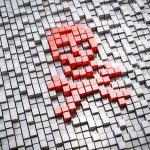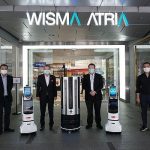EITN: What does this phrase mean? “conducted research that validates the effectiveness of UV-C disinfection upper air luminaires on the inactivation of SARS-CoV-2, the virus that causes COVID-19?”.
Alok: Together with Innovative Bioanalysis — a CAP, CLIA, AABB Certified Safety Reference Laboratory in Costa Mesa (California) — research was conducted to test the effectiveness of Signify’s range of upper air luminaires to inactivate SARS-COV-2 in the air. The research found that the product range inactivated 99.99% of SARS-COV-2 in the air of a room within 10 minutes. At 20 minutes, the virus was below detectable levels.
EITN: How permanent is the inactivated state of the coronavirus in a room with luminaires? Can it also inactivate the different mutated, evolving strains of the coronavirus?
Alok: As UV-C disinfection has been used for decades in a variety of fields, it stands to reason that it will be effective on an evolved strain of the coronavirus, as it breaks down the DNA and RNA of bacteria, viruses, and spores, leaving them harmless. There are no known micro-organisms resistant to UVC, so we expect UV-C disinfection to have the same effect on different mutated, evolving strains of SARS-CoV2 virus.
Last year, we partnered with National Emerging Infectious Diseases Laboratories at the Boston University School of Medicine to conduct the first round of research on the validation of UV-C disinfection. The research conducted during the onset of the pandemic shows that Signify’s UV-C light sources inactivated 99% of SARS-CoV-2 virus in just 6 seconds.
EITN: Now that there is a test that validates UV-C lighting can fight coronavirus and future viruses, how would you recommend the usage of UV-C Lighting?
Alok: UV-C can be harmful to living beings. Recommended usage of UV-C lighting depends on the type of UV-C solution. We have solutions that can be suitable for surface disinfection and for air disinfection. Our product range fits into different safeguard categories such as containment safeguard and equipment safeguard.
The containment safeguard product should be used when there is no human being or living being present in that area. The equipment safeguard product can be used for any Indoor environment. For consumer usage, the Philips UV-C desk lamp can effectively deactivate viruses, bacteria, molds and spores, all in a matter of minutes. To ensure its safety for home usage, an added layer of protection using sensors and timers ensures brief and safe exposure to UV-C radiation.
UV-C can be harmful to living beings. Recommended usage of UV-C lighting depends on the type of UV-C solution. We have solutions that can be suitable for surface disinfection and for air disinfection.
EITN: How were you able to create a UV-C disinfection solution within months of the coronavirus pandemic occurring?
Alok: UV-C disinfection technology is not new; rather at Signify, the current implementation of UV-C technology to stem the spread of Covid-19 is built on 35 years of experience in UV-C products and applications. The application of UV-C as a disinfection method to inactivate microorganisms has been an accepted practice since the mid-20th century.
We already have the UV-C lamp portfolio with our special lighting team and developed a range of products with those lamps. During the pandemic, we understood the need of the hour and created cross-functional teams to develop the solutions for air disinfection and surface disinfection with UV-C technology. Our current achievement is ensuring disinfection technology is easily accessible for consumer usage, thus expanding protection from pathogens from professional settings to your home.
EITN: How effective are these UV-C luminaires when in a room full of infected patients? What are the best scenarios/environments to deploy these UV-C lighting?
Alok: Direct exposure to UV-C lighting is dangerous to humans; the disinfection upper air luminaires are installed at a height which in combination with shielding and optics prevents a direct exposure to the UV-C light source.
The best environments to deploy UV-C lighting is in public areas or places with a lot of exposure to pathogens. Alternatively, we have a consumer-grade UV-C luminaire, the Philips UV-C desk lamp, that can be used in personal spaces such as homes or small offices.
Direct exposure to UV-C lighting is dangerous to humans; the disinfection upper air luminaires are installed at a height which in combination with shielding and optics prevents a direct exposure to the UV-C light source.
EITN: What are tech and business roadmaps for Signify’s luminaire?
Alok: In Signify we are always developing products that meet customer needs. During the pandemic, we have taken the initiative to develop a range of UV-C products. We are continuously evolving our product range around UV-C technology and there is a roadmap for the future development of the UV-C technology.





